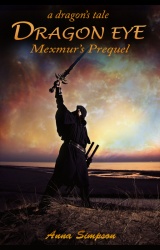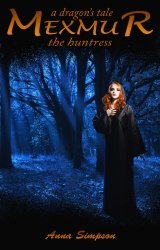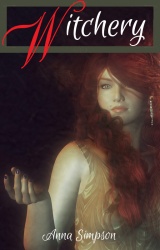This first time wrote a story, the feedback I received asked what was my character’s motivation. At the time I didn’t understand what they meant and rewrote the whole thing thinking I wasn’t clear as to why my main character went from one scene to the next. But they weren’t commenting on a plotting issue.
Have you ever been haunted by the past? Has it made you do something wild or crazy that makes no sense to an outsider looking in? Someone that knows you and has seen your heart or your past is able to truly understand where you come from and what drives you forward.
I want all readers to be my main character’s oldest and dearest friends. I want them to understand why she stopped the man she really, really likes from kissing her goodnight. Or  why an enemy stepped in to the rescue someone he hates.
why an enemy stepped in to the rescue someone he hates.
I’m not a psychologist. I can only use my experiences to figure out why someone else would, or would not act. What stops me flat? Memories of moments that infuriated me, embarrassed me, touched me. Sometimes instinct takes over, the feeling so raw I’m lost in the moment with the consequence’s white light searing into me.
To make my players come alive, to make it clear as to why a character takes action I use backstory. By slipping in a line or two, I can confide a secret, a scar, a confession or deep desire from the past.
I’m careful on the approach and do not include any backstory until after the inciting incident. Then I ask myself how much of a bump in the forward motion the story can endure. History should enhance the reader experience, not bog them down. Think of pacing, and I try to keep the rhythm steady.
Although I know every detail, that doesn’t mean I have to share all of it. In this case think of a fan dancer. Everyone knows the fan dancer is naked, but how much she chooses to show is completely up to her. The audience hopes for more, but she only gives them quick glimpse when it suits her.
Taking it a step further think of the story as the two feather fans, and the glimpses are the backstory. The whole dance may keep the audience attention, but its curiosity keeps them focused on the whole. We all know what’s behind the fans. Backstory, human history and like most us it contains love, heartache, embarrassment, growth, and rage. No long explanation is needed.
And if one is required, or the reader needs more emotion and detail insert a flashback. Make sure you think this through though. If backstory adds a bump to the flow, a flashback stops it dead. Some deciding factors are: does it deepen the reader’s understanding and emotional investment, and can using this device avoid using a prologue? If so, here are some suggestions: never insert one before the inciting incident, frame the flashback or be sure  there is a clear beginning and transition back into the original storyline, place it strategically to feed the building tension, and use as few as possible.
there is a clear beginning and transition back into the original storyline, place it strategically to feed the building tension, and use as few as possible.
Backstory and flashbacks are two vehicles that allow a writer to begin in medias res and still tell a complete story. They can explain the character motivation and give the reader a glimpse as to why one player chooses a red outfit instead of a grey one, a terrier instead of a massif, a hotdog instead of a steak and to run away or stand and fight.
Gathering baggage builds our character.
What kind of baggage is your character dragging around? Why can’t they let go? Are there any hidden issues that belong to you?










Great tips! When I first started writing, I attended a workshop held by Debra Dixon called “Goal, Motivation, and Conflict.” Every character wants something, there’s a reason that character wants it, and something is standing in the way of getting it. There’s also internal and external conflict. When you create stories that way, it’s always the first step to building a strong book.
Three of the most important things to keep a story moving forward and the reader interested. I’m sure the workshop was very helpful. 🙂
Your dedication to your characters is why they are so real to me Anna. I want to know where they go next..
Thanks, Laura. Its funny how well I know them before I write the first word. 🙂
Excellent round-up, Anna! I used to be so boring with my backstory, slotting it into my story in thick chunks. In the rewriting process this time around, I’ve eliminated every single one. I’ve looked at the story from the inside-out. Instead of telling the backstory as the author, I’ve learned to tell what matters most as the characters.
Excellent lesson we all need to learn. Thanks for commenting. 🙂
Yes, all of this. ^_^ In my current book, I made very sure that the plot came from the characters’ backgrounds, whether they knew it or not, which meant figuring out a bunch of stuff for those backgrounds and incorporating it into the story as necessary. It led to characters that were a lot more fleshed-out and felt like they existed before the story started. I’ve read characters who felt like they only existed for the story they appeared in, not before and not after, and they always seemed very strange to me.
Also: I really like the fan dancer analogy. ^_^
Thanks for your comments. I think we are on the same page 🙂
Excellent post. You make it so easy to understand. Another one for my writing tip file. ^_^
Thanks, Sherry. 🙂
They say to write what we know. The more impassioned we are about a situation, the more likely we will engage our readers.
The writer’s goal. 🙂
Love that snippet–motivation is not a plotting issue. It’s like the epiphany I got when I realized plot is not about setting, but emotion.
Like so many life lessons. All worth learning. 🙂
Hi, Anna,
It sounds as if you strike a careful balance as it pertains to information on your characters. I think it’s good to have information revealed in snippets as I get more familiar with a character and their story. People who have lived a little do have some interesting stories.
You’ve got my number. I’ve lived a little hehehe
I’m definitely getting better about finding ways to hold off backstory until the last possible moment. And if you do have to sneak some backstory in early, the trick is to make the backstory sound as if it’s a natural part of the story. Easier said than done.
I hear that 🙂
Nice, and as I reader I know I benefit from a little history to help me connect with a character.
I suspected as much hehehe
I have heard to use flashbacks sparingly because they are the easy way to do backstory without really trying. Don’t know if I believe that.
Some that is placement. No one wants to stall the flow. Being selective of where and how much can make or break the work. 🙂
Wonderful post, Anna. At present I’m writing a character with a particularly tortured past that is coming out in small bits as the story progresses both via flashbacks and backstory. In my experience, it’s far more difficult to integrate a flashback seamlessly than it is backstory. Flashbacks do interrupt the flow, but as you say, the where and how much is everything. I’ve structured the chapters so the flashbacks are short, intense, and usually appear at the end of the chapter where there is a “break” anyway.
I’ll remember that if I ever need to use flashbacks. So far I’ve avoided them since most of my work are shorts. 🙂
Pingback: Think You Need Therapy? So Do Most Main Characters. | Shout With Emaginette
Pingback: Subplots Add Character: Here’s How | Shout With Emaginette
Pingback: Revision 2: Early Stages | Elements of Writing
Pingback: Subplots and Why We Need Them | elements of emaginette
Pingback: Toolbox 11: 5 Things to Include When Building Characters | elements of emaginette